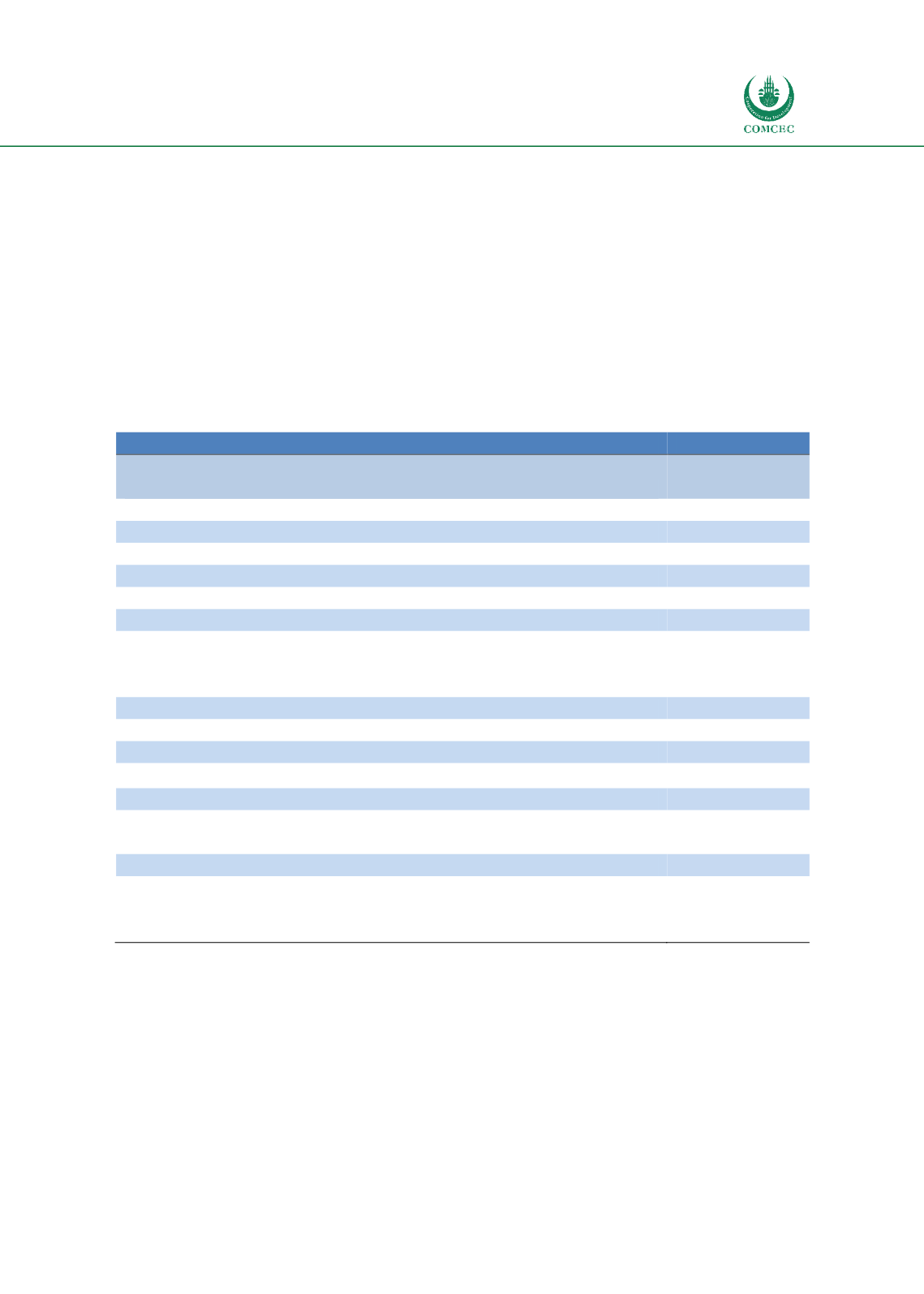

Authorized Economic Operator Programs
In the Islamic Countries:
Enhancing Customs-Traders Partnership
75
These numbers are the minimums and they can get higher. However, it is vital for a voluntary
program to assure its audience that the timeline from application to authorization adheres to
strict deadlines in an efficient way. Otherwise an initiative like the AEO program
implementation that aims to secure the international supply chain as well as facilitate trade
defeats its purpose by creating unpredictability.
Furthermore, it is noted that all OIC AEOs that responded to the survey are missing online
application capability and many lack a specific section on their websites on frequently asked
questions. The presence of these tools is critical in reducing the difficulty of application and
verification procedures as in international best cases.
Table 3.19. Least Commonly Incorporated Sub-Variables in OIC AEO Programs
Sub-Variables
Convergence
Application, verification, and authorization procedures
Consultation with Customs prior to Application
50%
Post-authorization audit
Regular Re-validation Mechanism
38%
Suspension, revocation and cancellation procedures
Appeals Process Exists
38%
Customs organizational structure for AEO programs
Communication with Other Government Agencies about AEO Program
38%
New Customs Technical Specialty Positions Established
0%
Training provided to customs officers
Regular Training Programs
38%
Partnership initiatives
Survey of Trader Satisfaction
13%
SMEs
Specific Benefits for SMEs (including at Application Stage)
25%
Electronic promotion of the AEO program
Online forms
38%
Online Application Capability
0%
FAQ
25%
Source: Authors’ compilation using survey data.
Challenge 3- The low degree of regular re-validation mechanisms for compliant AEOs and
formal appeals processes in cases of suspensions or cancellations may reduce the
attractiveness of AEO status.
Firstly, within OIC AEO programs some countries adopted indefinite AEO authorization with
need-based post authorization audits, while others opted for an expiry date for the
authorization followed by formal revalidation procedures. Depending upon the characteristics
of the Customs organization and ingrained bureaucratic traditions of the country, it is natural
to observe differences in this respect. However, interviews with the private sector
















